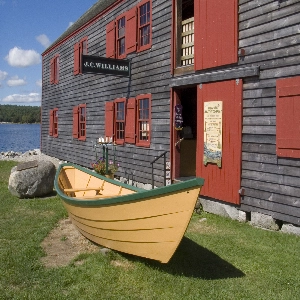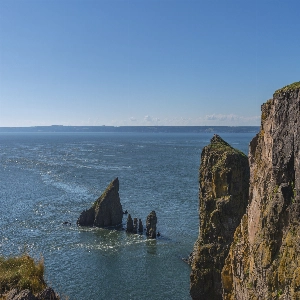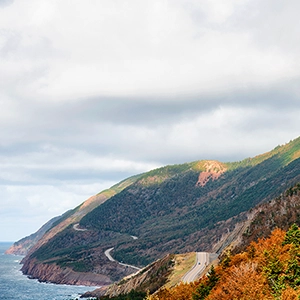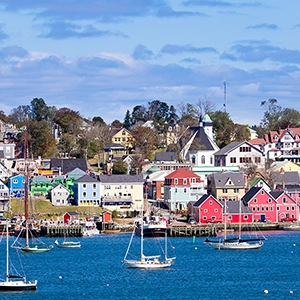Experience The Highest Tides In The World At Burntcoat Head
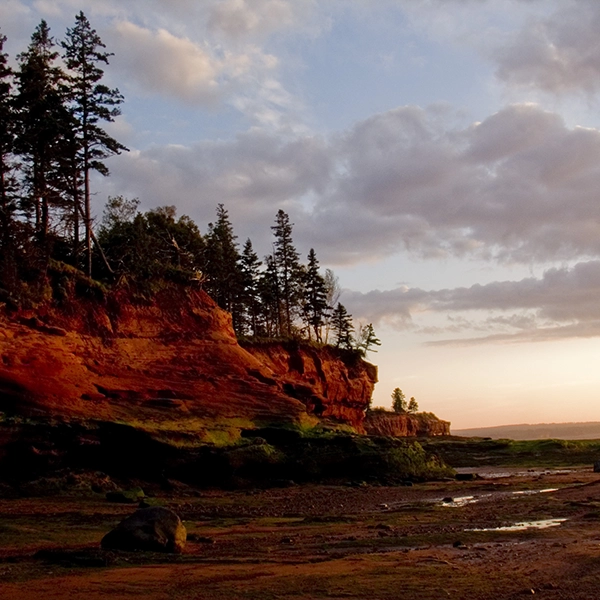
Introduction to Burntcoat Head
Burntcoat Head is a small rural community located in Nova Scotia, Canada. It is well-known for being the site with the highest recorded tides in the world. Nestled along the shores of the Bay of Fundy, Burntcoat Head Park is an exciting destination for tourists and locals alike who are fascinated by the wonders of nature. This article will explore the history of Burntcoat Head, the captivating tidal phenomenon, the scenic Burntcoat Head Park, and various recreational activities that visitors can enjoy at the site.
History of Burntcoat Head
Burntcoat Head has a rich and intriguing history that dates back to the 1700s. Its unique name is believed to have originated from either the French or British settlers who once inhabited the area. The Acadian French settlement of "Beaubassin," which was established in the early 1700s, may have influenced the name as "burnt coast" when translated to English. Alternatively, British surveyors could have named the location due to the reddish-orange lichen that covers the headland rocks, giving the appearance of a burnt coastline.
Regardless of the origin of its name, Burntcoat Head was an essential location during the age of sail. The strong tides of the Bay of Fundy created a natural deep-water port that was advantageous for trade, and it soon became a bustling economic and community center. In its heyday, Burntcoat Head was a prosperous shipbuilding hub, with vessels built on site that were then launched to sail around the world. Today, the remnants of the old wharf and slipway, as well as the foundation of the old schoolhouse, provide a glimpse into the village's fascinating past.
The Tidal Phenomenon of Burntcoat Head
Burntcoat Head holds the Guinness World Record for the highest recorded tides, with a difference of 16.3 meters (53.5 feet) between low and high tides recorded in 1975. The reason behind this incredible tidal phenomenon lies in the unique geography and natural forces at play in the Bay of Fundy.
The Bay of Fundy stretches for over 170 miles between the coastlines of Nova Scotia and New Brunswick in eastern Canada. The sea's funnel-shaped opening with a narrow end at Minas Basin causes the tidal range to become amplified as the seawater passes through the bay. As the gravitational forces of the sun and the moon create a tidal bulge, the incoming tide converges towards the Minas Basin, experiencing friction as the momentum increases. This frictional convergence amplifies the tide height, resulting in the spectacular tidal range seen at Burntcoat Head.
Visitors to Burntcoat Head can experience the striking difference between low and high tides by walking on the ocean floor during low tide and exploring the numerous tide pools, caves, and rock formations. At high tide, the captivating power of nature is displayed as the shoreline seemingly disappears under the enormous volume of water as the park becomes an island.
Burntcoat Head Park
Burntcoat Head Park is a 3-acre public park in Nova Scotia that offers visitors an unforgettable experience of exploring the highest tides in the world. The park's rugged beauty, with its exposed red sandstone cliffs, sea caves, and various rock formations, offers a spectacular and ever-changing landscape that will captivate nature enthusiasts and photography buffs alike. Burntcoat Head Park also features an iconic lighthouse, originally built in 1858, which is a must-see attraction for visitors to the area. The current lighthouse, built in 1993, is a replica of the original structure and is available for guided lighthouse tours.
The park offers a range of facilities for visitors, including a picnic area, washrooms, a gazebo, interpretive panels, and walking trails that provide perfect vantage points to experience the park's natural beauty. For the safety and enjoyment of visitors and wildlife alike, the park follows a "carry-in, carry-out" trash policy, ensuring that the park remains a pristine sanctuary for its flora and fauna.
Recreational Activities at Burntcoat Head
Visitors to Burntcoat Head have various opportunities to explore and enjoy the magnificent landscape and tidal phenomenon in the Bay of Fundy. Below are some of the recreational activities available at Burntcoat Head:
Tidal Exploration: Low tide is the perfect time to explore the seafloor and discover the diverse marine life that inhabits the intertidal zone. Visitors to Burntcoat Head are encouraged to wear appropriate footwear and clothing, as the park's shoreline can become very muddy during low tide.
Photography: Visitors who are passionate about photography will find endless opportunities to capture incredible images of the dynamic landscape, as well as the diverse flora and fauna that call Burntcoat Head home.
Guided Lighthouse Tours: Burntcoat Head Lighthouse is open for tours throughout the summer season. These guided tours offer visitors fascinating insights into the history of the lighthouse and the community, as well as the opportunity to appreciate the extraordinary views from the top of the lighthouse.
Hiking: The walking trails at Burntcoat Head Park offer visitors stunning and varied vantage points, where they can experience and appreciate the incredible tidal phenomenon and landscape. Hikers should be cautious and aware of the tide schedule, as sections of the park can become submerged during high tide.
In conclusion, Burntcoat Head is a remarkable destination that offers visitors the opportunity to experience the extreme tidal phenomenon of the Bay of Fundy, explore a diverse and ever-changing coastal landscape, and immerse themselves in a rich and intriguing history. Whether it's exploring the ocean floor when the tide is low, taking photographs of the dramatic landscape, or climbing the lighthouse for a panoramic view of the area, Burntcoat Head remains an unforgettable experience for all who venture to this unique corner of Nova Scotia.





